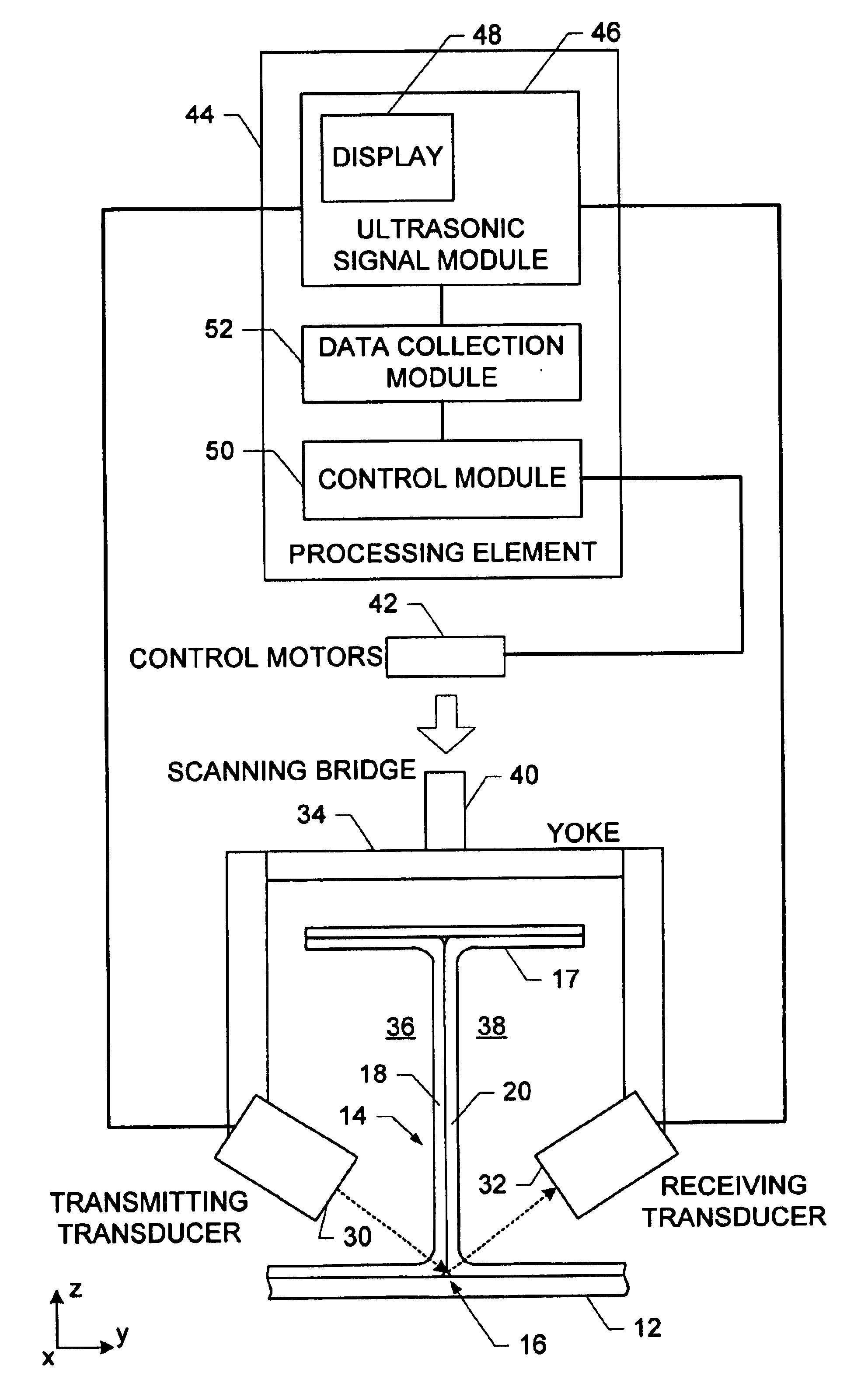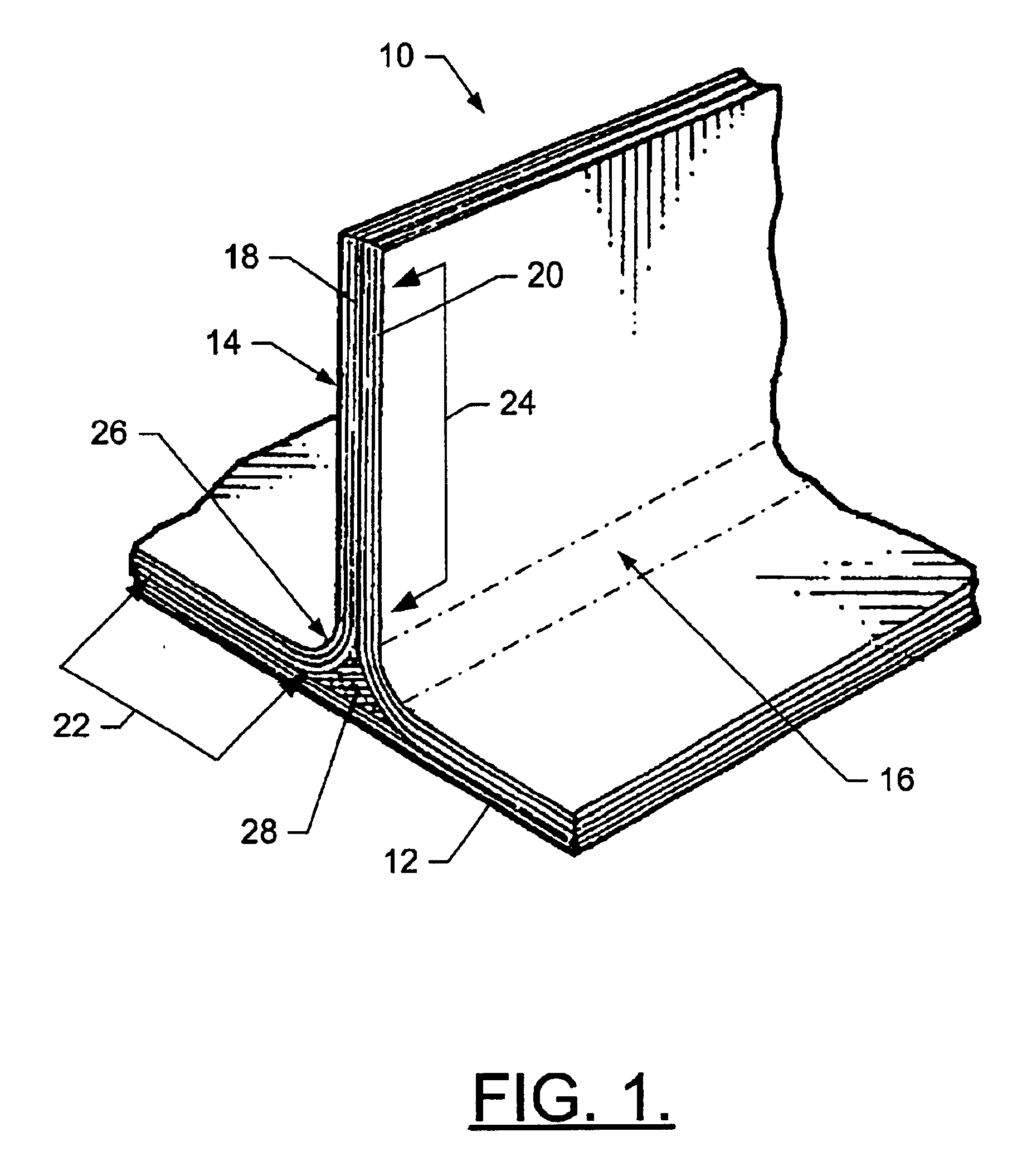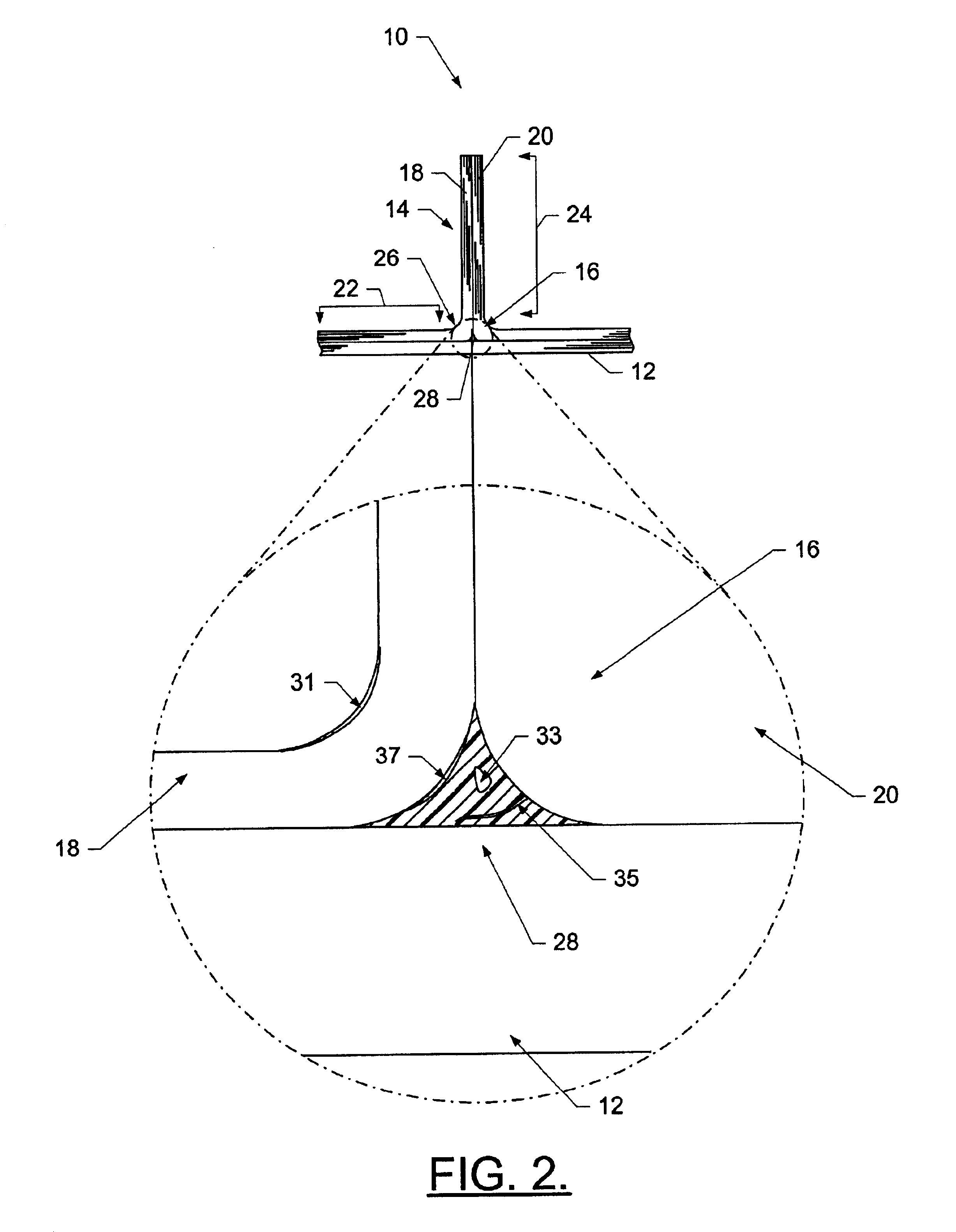System, method and apparatus for the inspection of joints in a composite structure
a composite structure and joint technology, applied in the direction of instruments, specific gravity measurement, mechanical means, etc., can solve the problems of many drawbacks in the method, adversely affecting the composite structure, and difficult inspection of joints, etc., to achieve reliable detection of defects within joints, inexpensive manufacturing, and inexpensive implementation
- Summary
- Abstract
- Description
- Claims
- Application Information
AI Technical Summary
Benefits of technology
Problems solved by technology
Method used
Image
Examples
Embodiment Construction
The present invention now will be described more fully hereinafter with reference to the accompanying drawings, in which preferred embodiments of the invention are shown. This invention may, however, be embodied in many different forms and should not be construed as limited to the embodiments set forth herein; rather, these embodiments are provided so that this disclosure will be thorough and complete, and will fully convey the scope of the invention to those skilled in the art. Like numbers refer to like elements throughout.
Referring to FIGS. 1 and 2, there is shown a reinforced composite structure generally indicated at 10. The composite structure generally comprises a first panel 12, such as skin, and a second panel 14, such as a web, that are connected thereby defining a joint generally indicated at 16. In instances where the first panel comprises a skin and the second panel comprises a web, the web would normally be jointed to an upper panel 17 or spar cap, as shown in FIGS. 3 ...
PUM
 Login to View More
Login to View More Abstract
Description
Claims
Application Information
 Login to View More
Login to View More - R&D
- Intellectual Property
- Life Sciences
- Materials
- Tech Scout
- Unparalleled Data Quality
- Higher Quality Content
- 60% Fewer Hallucinations
Browse by: Latest US Patents, China's latest patents, Technical Efficacy Thesaurus, Application Domain, Technology Topic, Popular Technical Reports.
© 2025 PatSnap. All rights reserved.Legal|Privacy policy|Modern Slavery Act Transparency Statement|Sitemap|About US| Contact US: help@patsnap.com



